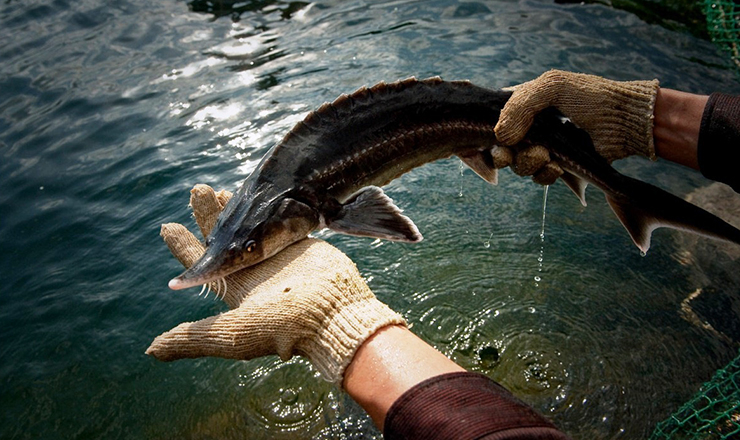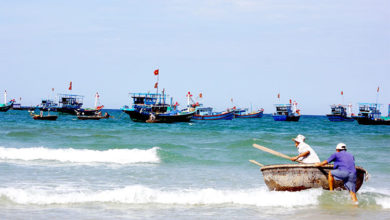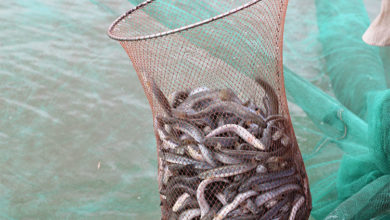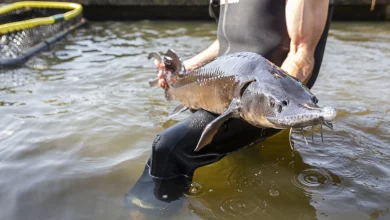Lao Cai to develop a production and chain for cold-water fish
Efforts to establish a production and consumption chain for cold-water fish in Lao Cai Province, along with solutions to strengthen linkages between production and consumption, were key topics at a seminar organized by the Provincial Farmers’ Association on December 20.
Challenges in cold-water fish production and consumption
The development of cold-water fish farming in Lao Cai has faced several challenges, including unregulated and unplanned farming practices. Shared water sources complicate the management of water quality, disease control, and product standards. Additionally, the use of cold-water resources has not been properly regulated, lacking comprehensive measures for resource management and environmental protection, leading to potential risks for dams, ponds, and reservoirs.
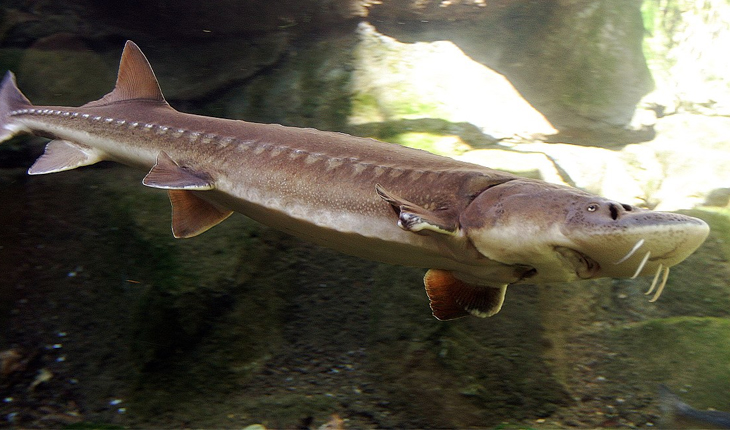
The province has yet to achieve self-sufficiency in fry production, with the quality and supply of sturgeon fry remaining inconsistent. Current consumption is largely dependent on a few businesses, cooperatives, and trade groups. While the Lao Cai Cold-Water Fish Association has facilitated connections among farmers and stakeholders, the volume of fish consumed in major domestic markets like Hanoi and Ho Chi Minh City, as well as internationally, remains limited.
Proposed solutions for enhancing linkages
To address these issues, seminar participants proposed several measures to strengthen the production-consumption chain, including:
- Allocating provincial funds to support the capacity-building of stakeholders involved in the chain.
- Establishing clear standards and regulations for fry quality to ensure control before market distribution.
- Creating mechanisms to encourage fry production facilities to participate in the value chain.
Additionally, experts emphasized the need for professional evaluation of fish feed supplied within the province to ensure quality before market entry. Collaboration with feed suppliers within the production-consumption model was also highlighted.
Support for households to obtain VietGAP aquaculture certification is critical for expanding Lao Cai’s cold-water fish products into national and international markets.
Cold-water fish farming: A high-income industry
According to the Provincial Farmers’ Association, cold-water fish farming has become a significant income-generating activity in Lao Cai. Nearly 1,200 households across areas such as Sa Pa, Bat Xat, Bao Yen, Van Ban, Lao Cai City, Bac Ha, and Bao Thang produce around 1,500 tons of trout and sturgeon annually, with an estimated value of over 300 billion VND.
Chairman of the Provincial Farmers’ Association, Bui Quang Hung, noted that by 2025–2030, Lao Cai aims to expand its cold-water fish farming capacity to 54,500 m³ of tanks, mainly in Bat Xat, Muong Khuong, and Sa Pa. However, despite surpassing 382,000 m³, the industry continues to face challenges, particularly unstable markets and weak linkages, leaving farmers uncertain. The seminar served as a platform for gathering feedback, refining scientific reports, and identifying solutions to strengthen production and consumption linkages.
Strengthening partnerships with fish medicine suppliers
Den Thang Commune, Bat Xat District, has seen significant economic improvements from cold-water fish farming. However, trout and sturgeon are prone to diseases, especially intestinal infections, leading to substantial annual losses. Farmers urged the Farmers’ Association to foster connections with fish medicine suppliers to prevent unregulated use of medications, which could harm the environment. Stricter controls over fish purchasing businesses were also requested to prevent price manipulation and underpricing.
Enhancing cooperative management
Cooperatives should improve their management and operational efficiency by focusing on specialized training in financial management, business planning, and market strategies. Transparent and effective operations will ensure member benefits and secure consistent input quality and quantity, minimizing disruptions in the value chain.
Moreover, cooperatives should diversify their offerings, developing value-added processed products alongside raw materials. They should also provide essential services to members, such as fry, feed, and technical support. Expanding partnerships with processing and distribution businesses, participating in agricultural fairs, and utilizing online platforms for promotion and sales are also critical steps.
Managing imported fish
In the past, cold-water fish, such as trout and sturgeon, were easily consumed due to high prices and international demand. However, economic challenges have lowered prices, and local trout is now mainly sold within Lao Cai. Expanding to larger markets and supermarkets has been difficult due to a preference for imported fish.
Farmers called for stricter regulations on imported fish to prioritize local products. They also suggested raising awareness among consumers and producers about selecting high-quality fry and products to create a more transparent cold-water fish market.
Maximizing the potential of E-commerce
With the growing e-commerce market, cold-water fish products like sturgeon and trout have significant potential for online trade. However, challenges remain, including logistics and quality assurance.
To overcome these barriers, stakeholders proposed improving logistics systems, collaborating with professional transport providers, and investing in cold preservation technologies to maintain product quality. Building strong brands for Lao Cai’s trout and sturgeon through certifications and strategic marketing campaigns is also vital.
Training sellers to effectively use e-commerce platforms and fostering partnerships within the value chain can ensure a stable supply. Finally, integrating technologies like blockchain or QR codes for product traceability will enhance transparency and consumer confidence.
VFM



